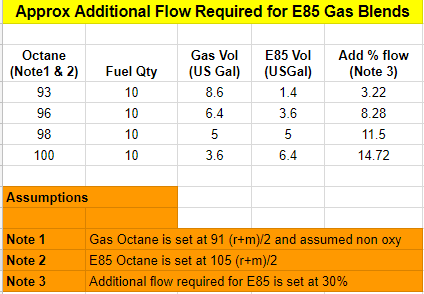955IsAlive
New member
- Joined
- Apr 22, 2018
- Location
- MN
Setting aside the challenges of getting consistent E85 blends for a moment.
I made some calculations for the extra flow required based on desired octane for gas/E85 blends.
If you're already on a injector high duty cycle and fuel pressure with your system, this might be handy.

I made some calculations for the extra flow required based on desired octane for gas/E85 blends.
If you're already on a injector high duty cycle and fuel pressure with your system, this might be handy.

